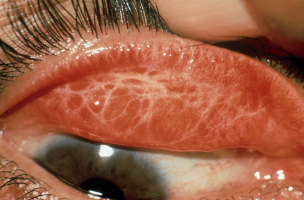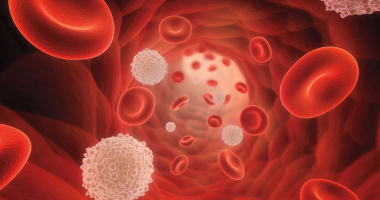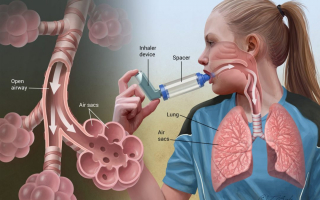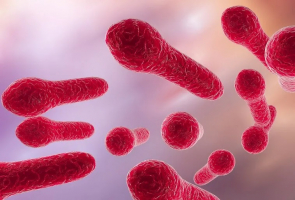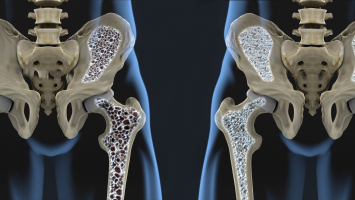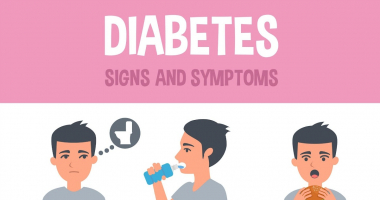Top 5 Signs and Symptoms of Lactose Intolerance
Most mammals' milk contains lactose, a type of sugar that occurs naturally in food. Lactose intolerance is very common, affecting up to 70% of people ... read more...worldwide. Stomach pain, bloating, gas, and diarrhea are some of the symptoms of lactose intolerance, which is brought on by lactose malabsorption. Read on to know more about the Signs and Symptoms of Lactose Intolerance!
-
Lactose intolerance is frequently characterized by bloating and stomach pain in both children and adults. Lactose passes through the gut and into the colon when the body is unable to break it down.
The lower part of the stomach and the area around the navel are where the pain is most frequently felt. An increase in water and gas in the colon causes the gut wall to expand, a condition known as distention and gives the sensation of bloating. It's interesting to note that the level of discomfort and bloating is not correlated with the amount of lactose consumed, but rather with the person's sensitivity to symptoms of distention. As a result, each person's symptom intensity and frequency may differ greatly. Finally, some people may experience nausea or even vomiting as a result of bloating, distension, and pain. Although uncommon, this has been observed in some cases, including in children.

Stomach Pain and Bloating 
Stomach Pain and Bloating -
Increased frequency, liquidity, or volume of stools are all symptoms of diarrhea. Diarrhea is defined as passing more than 7 ounces (200 grams) of feces in a 24-hour period.
By raising the amount of water in the colon, which also increases the volume and liquid content of the stool, lactose intolerance causes diarrhea. Compared to adults, babies and young children are more prone to it. Diarrhea often only occurs when the colon has more than 1.6 ounces (45 grams) of carbs. In terms of lactose, this is comparable to consuming 3 to 4 cups (750 ml to 1 liter) of milk, assuming no lactose is digested before it reaches the colon. Lactose isn't the only source of carbs that can result in diarrhea, though. In fact, in healthy adults, 20 to 30% of all eaten carbs pass through the colon undigested. As a last note, lactose intolerance is just one of several causes of diarrhea. These include food, additional malabsorption conditions, drugs, infections, and inflammatory bowel diseases.
Diarrhea 
Diarrhea -
The production of the gases hydrogen, methane, and carbon dioxide rises as a result of lactose fermentation in the colon. In fact, the colon microflora becomes quite efficient at fermenting lactose into acids and gases in people with lactose intolerance. This causes the colon to ferment more lactose, which increases flatulence even more.
Because of differences in the efficiency of the microflora and the rate of gas reabsorption by the colon, the amount of gas generated might vary greatly from person to person. It's interesting to note that the gases produced by lactose fermentation are odorless. Actually, rather than carbs, the odor of flatulence is caused by the breakdown of proteins in the gut.

Increased Gas 
Increased Gas -
Hard, infrequent stools, incomplete bowel motions, stomach discomfort, bloating, and excessive straining are all signs of constipation. Despite being a far less common symptom than diarrhea, it might still be a sign of lactose intolerance.
In the colon, bacteria convert undigested lactose to methane gas. Methane may make it harder for food to pass through the gut efficiently, which can cause constipation in certain people. Only people with irritable bowel syndrome and bacterial overgrowth have so far been subject to studies on methane's constipating effects. Even though it has been noted as a symptom, constipation is not typically linked to lactose intolerance. Other factors that contribute to constipation include dehydration, a diet low in fiber, certain drugs, irritable bowel syndrome, diabetes, hypothyroidism, Parkinson’s disease and hemorrhoids.

Constipation 
Constipation -
While gastrointestinal problems are the most common lactose intolerance symptoms, certain case studies have noted additional symptoms, such as:
- Headaches
- Fatigue
- Loss of concentration
- Muscle and joint pain
- Mouth ulcers
- Problems urinating
- Eczema
- ...
These signs may be caused by various conditions and have not yet been proven to be lactose intolerance symptoms. Additionally, some patients who have a milk allergy could mistakenly mistake lactose intolerance for their symptoms. In fact, cow's milk allergies are more prevalent in children and affect up to 5% of the population. Lactose intolerance and milk allergy are unrelated. It's critical to accurately diagnose symptoms, especially in children, because a milk allergy can be severe as opposed to lactose intolerance.

Other Symptoms 
Other Symptoms








